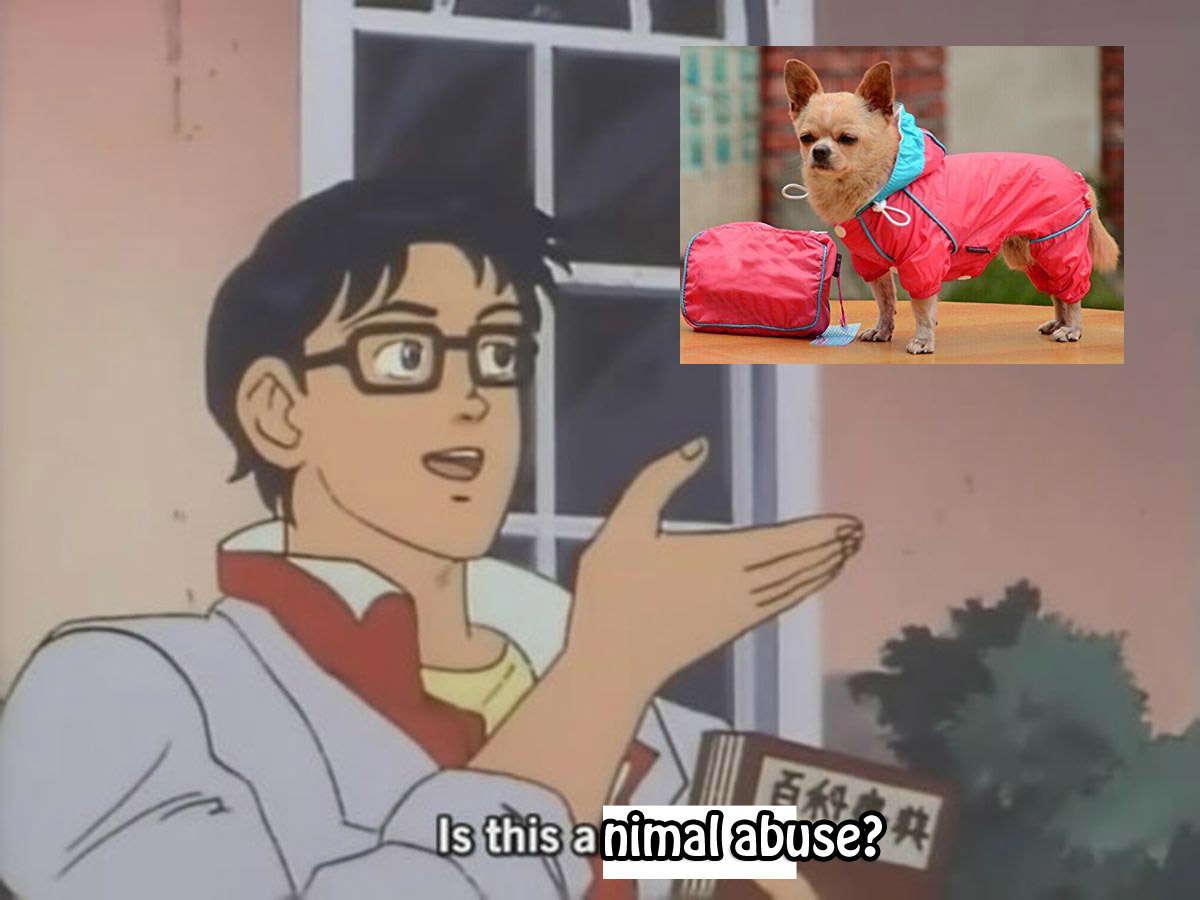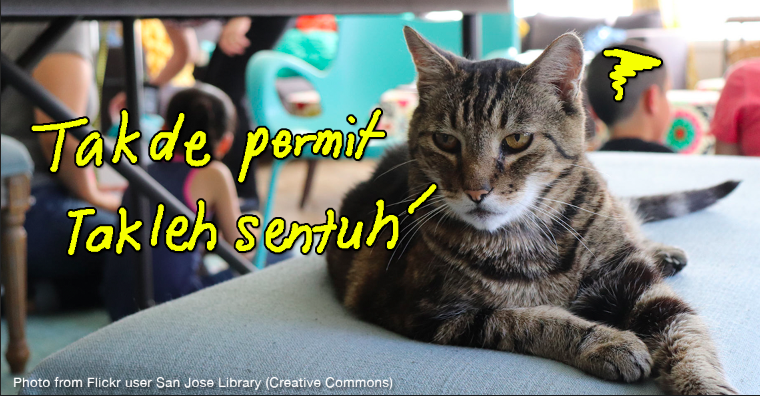Orangutans lighting up might not even be the worst thing happening in Malaysian safaris.
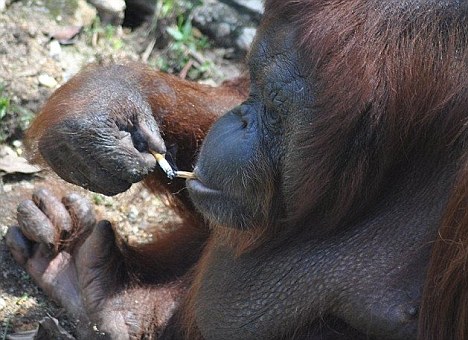
- 207Shares
- Facebook185
- Twitter3
- LinkedIn2
- Email5
- WhatsApp12
Some time before, we received a message from Upreshpal Singh, the Director of Friends of the Orangutans Malaysia (FOTO), asking for Perhilitan as well as the NRE Minister Dr Xavier Jayakumar to stop the transfer of two elephants from Perhilitan to a recently-opened park in Langkawi, the Langkawi Nature Park (LNP).
Along with the message, we’ve also received pictures and documents that allegedly depict the state of abused animals at another safari park, the Bukit Gambang Safari Park (BGSP) in Pahang. However, we couldn’t find any other mention of the depicted cases of verify their truth, so we should probably take these with a pinch of salt.
[WARNING: Pictures of possibly dead animals, which some may find disturbing.]

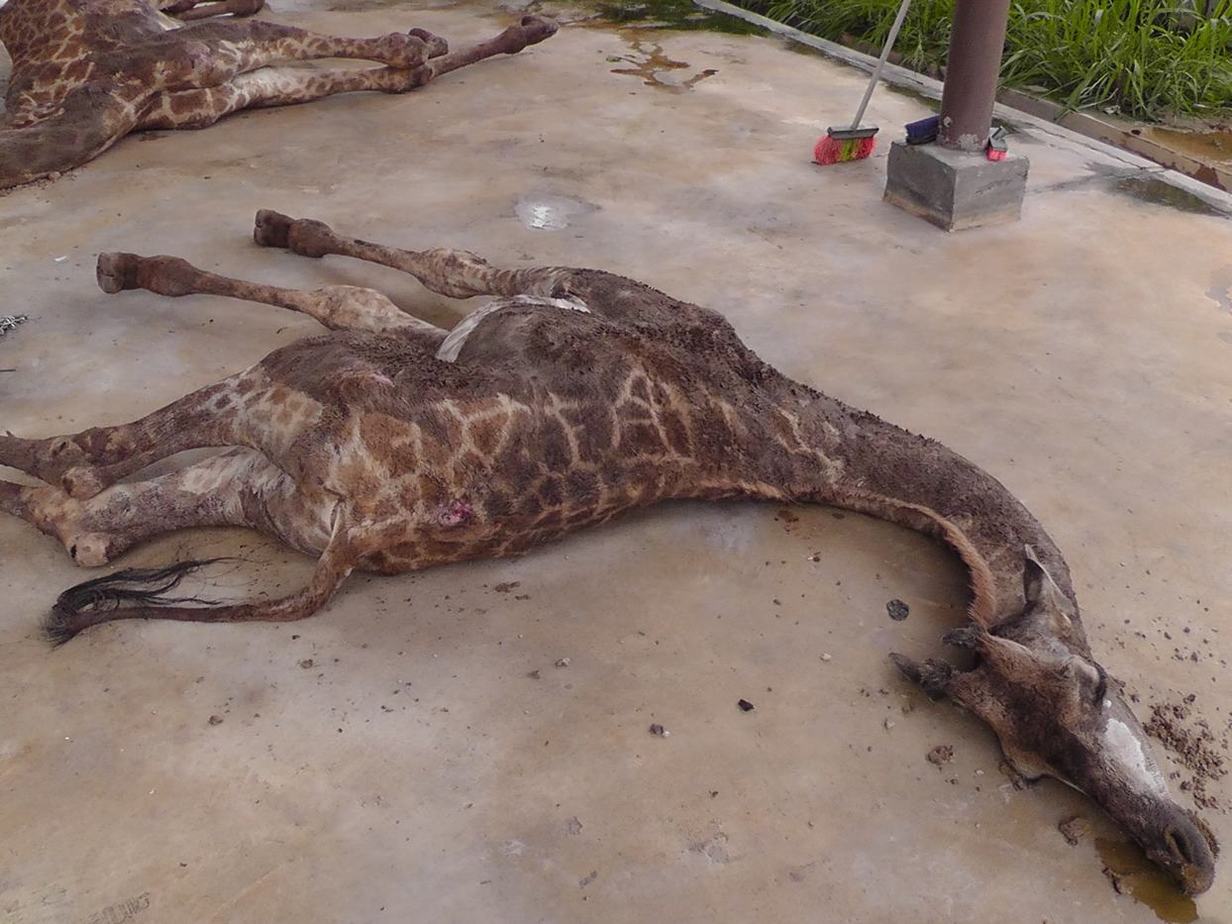
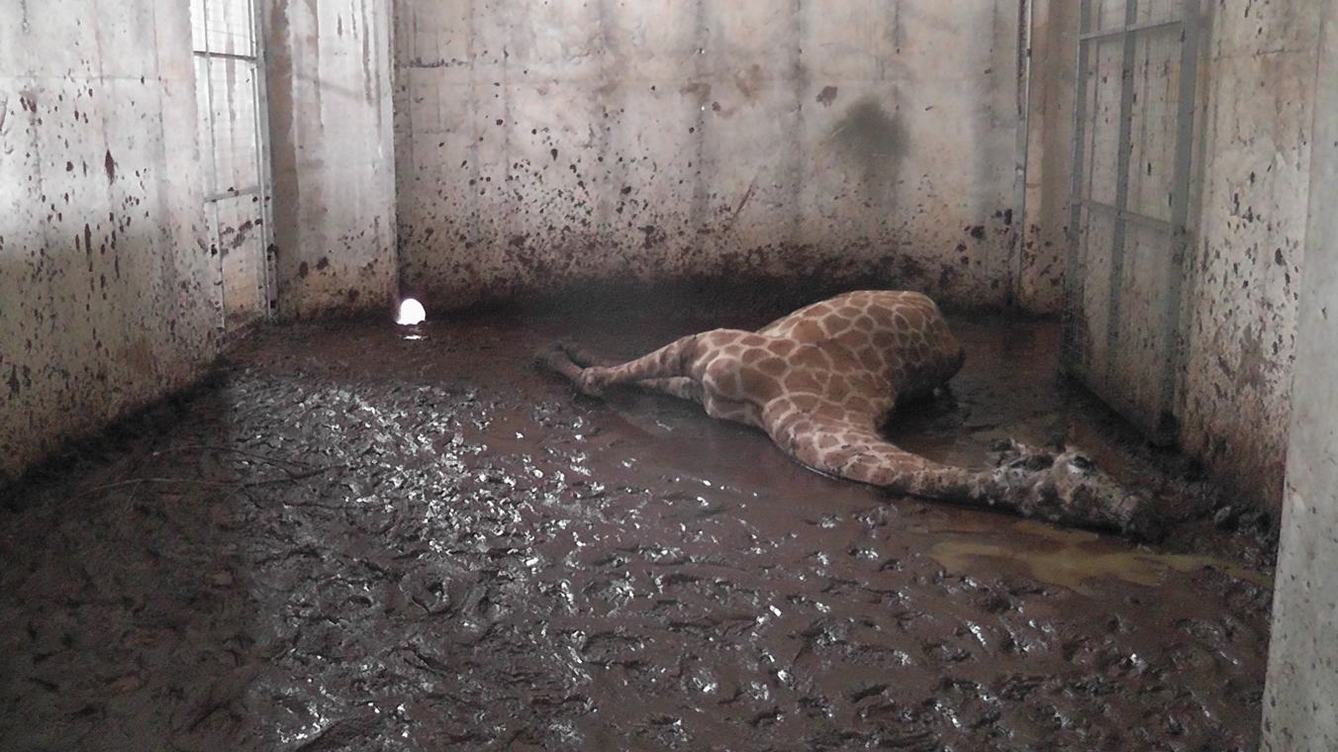
[End of pictures]
These pictures allegedly came from a park belonging to a company called Sentoria Group Bhd. Upreshpal had stated that they have received numerous complaints of animal abuse happening in BGSP, and the two elephants there, said to be transferred from a Perhilitan-run elephant sanctuary in Kuala Gandah, were no strangers to abuse.
The e-mail also alleges that elephant experts have condemned the way BGSP treated their elephants, and even well-meaning Perhilitan staff had expressed their dismay at the elephants’ treatment. The insider had told FOTO that the elephants live in a drab enclosure, and are chained when not on display.
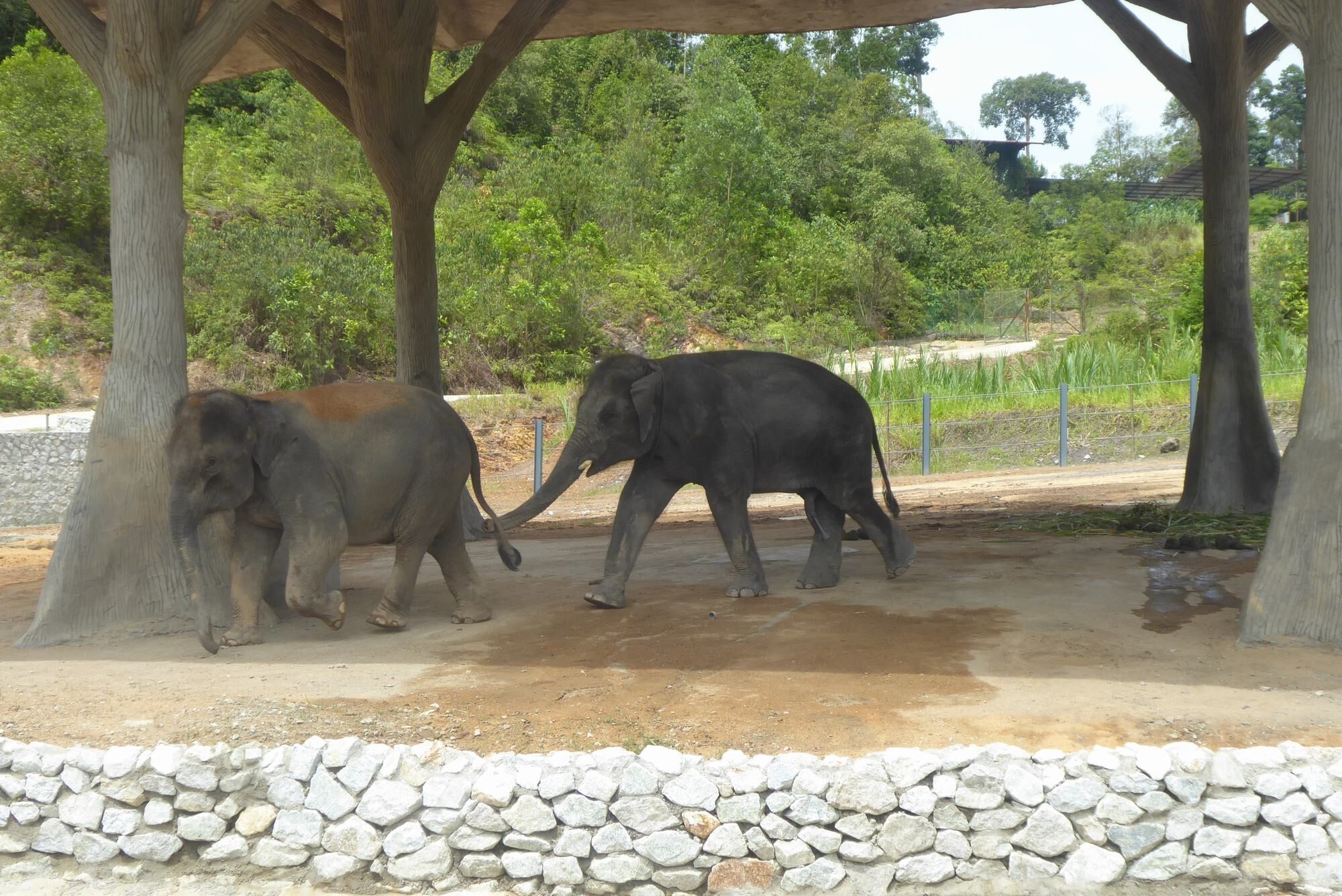
The idea of taking elephants from a sanctuary and handing them to organizations that FOTO considers as animal abusers form the basis of their protest. There were also post mortem reports for at least 8 giraffes, all of them dead within a year of ‘heart failures’, also attributed to one of the parks. However…
They’re just allegations, and the park’s management had denied any abuse of elephants in their care

To be really sure, we contacted the BGSP management on these allegations, and their spokesperson had denied them, saying that their elephants have been treated fairly.
“Our elephants are treated fairly, we also hire an experience mahout (elephant trainer) from Thailand with a few locals currently under training, the enclosure and exhibit are steadily improving according to the elephant age and local authority requirements. Recently we had upgraded the exhibit enclosure with a bigger pond and various enrichment programs of which we had constantly followed under the Zoo regulations of Wildlife 2010 Act / Act 716.
“Upgrading and activities is a continuous effort and progressively in conjunction of the elephant’s age with the reference to the Act.” – BGSP Spokesperson, in an e-mail interview with Cilisos.
The Langkawi Nature Park had also denied the abuse of animals on its safari. However, a call to our own insider at Bukit Gambang reinforced the notion that animal abuse had been happening behind the scenes at BGSP. Having said that, a quick search of reviews on TripAdvisor reveals no mention of animal mistreatment.
So actually do these parks have the proper expertise to keep animals?

Let’s say you decide to open a zoo. What will you need? Animals, obviously, and a place to keep them. Oh, and probably lots of cash as well. And a vet, probably. And maybe one or two guys to sell tickets and snacks and to care for the animals. But that’s just the bare minimum, and in the past the zoo we’ve described could have just flown past the authorities.
In February 2012, the Wildlife Conservation (Operation of Zoo) Regulations 2012 was gazetted under the Wildlife Conservation Act 2010. Consequently, the requirements to open and keep a zoo became stricter, and Perhilitan now have power against zoos and wildlife parks that don’t comply with the regulations.
According to the regulations, just showing that you have a cage for tigers won’t be enough; you have to show that the night enclosure (where exhibited animals retire to at night) you plan for them is at least 4 × 3 meters wide, and at least 3 meters high. If the enclosure is meant for more than one tiger, then the size needs to be increased by 10% for every additional tiger. These minimum specifications detailed in the Regulations are different for each animal group, and that’s just a portion of it.

Among other things, every zoo must have a quarantine area and a vet clinic in case of diseases, the cleanliness of the zoo have to be maintained, enough nutritious food must be given to the animals, a record have to be kept of the animals and their healthcare, vaccinations have to be given, and any animal shows must only involve the animals’ natural behaviors, so no more bears on tricycles.
So if you manage to complete the paperwork that shows your future zoo will comply by all of these regulations, a Zoo Committee will then review those and visit the site where your zoo is supposed to be. If the committee is satisfied, you will receive a written approval and a zoo permit, and that’s it. You get a zoo.
But that does not mean you can slack off. Each zoo permit only lasts for a year, and you will only get a new permit if you manage to prove that the welfare of animals in your zoo is satisfactory, year after year after year.
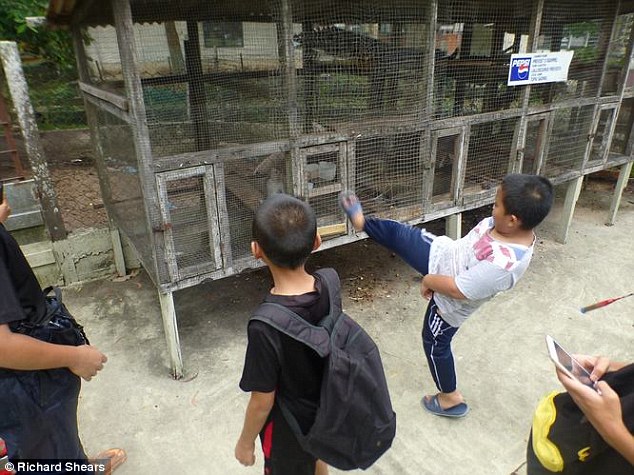
A UKM study that compared these regulations to Japan’s found that ours are much more comprehensive. And even though some zoo operators have found the regulations to be unfair and burdening, animal activists have generally lauded these new Regulations. However, laws are just words on paper…
Unfortunately, enforcement of these regulations had been said to be lacking

Based on the permit system, bad zoos should not be able to survive for more than a year. However, Perhilitan (the permit issuer) had been accused of turning a blind eye to some zoos. Sean Whyte, the founder of Britain’s Nature Alert, had complimented the new Regulations as being ‘comprehensive and excellent’, but at the same time had expressed his doubts on the enforcement of the regulations, as he felt the Perhilitan had a dismal record in enforcing the law and was too lenient with some zoos.
“The new law will be useless if not enforced diligently and transparently by Perhilitan. We can only judge them by what they do, not by what they say they will do,” – Sean Whyte, in 2012, to the Star.
To add to that, Perhilitan itself has gained a bad reputation throughout the years (seized exotic animals dying in their care, allegedly having seized ivory gone missing, and remaining mum on several issues), but it seems like not much is being done to fix these problems. (At least that’s how it looks like from a public standpoint.)
In 2015, the Sahabat Alam Malaysia (SAM) had stated its concern about the growing number of new zoos in Malaysia, which they said were designed based on the infrastructure of bad zoos. Citing the Kemaman Recreational Park and Zoo and the Bukit Gambang Safari Park as examples of bad designs for zoos, the organization wondered how the NRE Ministry as well as Perhilitan issued permits to these zoos in the first place. Previously, they had asked that all new zoos and parks be put on hold.

But traces of Perhilitan’s enforcement had shown up in the news. 2012 saw the end of at least 6 zoos, including the Mines Wonderland. These zoos had been found to not comply to the standards set down by the Wildlife Conservation (Operation of Zoos) Regulations gazetted that year, in an operation that audited some 45 wildlife-holding premises. The animals were confiscated and held by the Perhilitan for rehab before either returning them to their natural habitats or giving them to other local zoos with valid permits.
And following reports and photographs of animal abuse at the Kemaman Zoo earlier this year, Perhilitan had conducted a check and found nothing wrong with the zoo, as there had been reasons behind the alleged pictures of abuse. The animals photographed in small cages were said to be undergoing treatment, and there were no records of death as alleged by NGOs and the public.
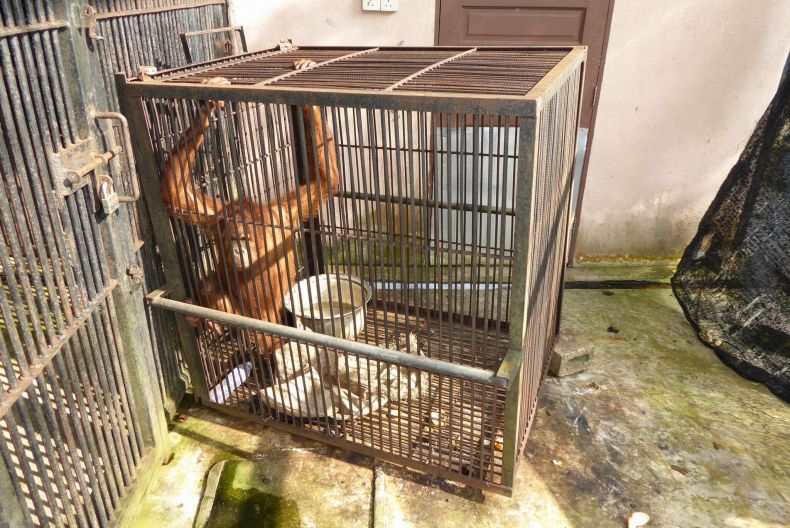
Are these zoos really good at hiding animal abuse, or are the NGOs being paranoid? While zoos may hide bad practices from the authorities, it would be harder to hide abuse from the public and their patrons. Which brings us to the final point…
So yes, the public can help make Malaysian zoos better.
Original imgs from Vox and Pinterest.
How can you reasonably tell if a zoo is abusing its animals? Here’s a little anecdote. Leonard Qi, a Beijing-based animal rights activist, recounted an experience where he stopped a child from throwing popcorn at chimpanzees at a Chinese zoo. He was confronted by the child’s mother who berated him, saying that it was none of his business, then continued throwing popcorn at the primates herself. When he reported the incident to a zoo staff, he said that it was fine.
“…I was told, ‘It’s okay, the chimpanzee actually likes the food. They’re okay as long as visitors don’t throw stones at them,’” – Leonard Qi, as reported by South China Morning Post.
The anecdote was meant to highlight the indifference towards animal welfare in China, but it raises an interesting point instead: is it abuse if the animal likes it?

Some animal activists claim that the very act of putting animals in zoos constitutes as an abuse, but if the Life of Pi can be used as a reference, anthropomorphizing animals (giving them human traits) can be problematic as well. Humans might find it insulting or degrading to have popcorn thrown at them, but a chimpanzee may see it as an act of generosity.
So where do you draw the line? Perhilitan had set forth a set of guidelines called the Five Freedoms for Captive Wildlife, and they are:
- Freedom from Hunger and Thirst (are the animals too skinny/fat? Is there a water source to drink from? Are they clean?)
- Freedom from Discomfort (can the animal hide from the sun or rain?)
- Freedom from Pain, Injury or Disease (are the animals limping or seem sick?)
- Freedom to Express Normal Behavior (can birds fly in their cages? Is there anything for chimpanzees to climb? etc)
- Freedom from Fear and Distress (are animals shrinking away from visitors/staff? are they being made to do something they normally won’t be able to? are pack animals being isolated/solo animals being crammed together?)
Another important thing to look for is stereotypic behavior, actions that are done repetitively but serve no purpose. These can range from repeated pacing, biting of cage bars, excessive grooming (to the point of making the animal look damaged), or other strange repetitive behavior. These are all indicators of stress in animals, and if a zoo animal (or any confined animal, for that matter) exhibits this kind of behavior, something is wrong with the way it is being treated.

As mentioned previously, Perhilitan does have quite a bit of a reputation at the moment, but they do seem to care about bad zoos, so you can actually report your suspicions to them at 1-800-88-5151.
If that doesn’t work, and you’re really sure animal abuse is happening, you can try raising awareness on the issue through social media, starting a petition, or by contacting the media. Anything that brings the issue to the eyes of the general public helps, and it may change something, like how TripAdvisor stopped selling tickets to attractions that abuse animals after coverage by the National Geographic. It might also stop people from visiting the zoo in question.
While some may see zoos as an unnecessary exercise in animal abuse, good zoos do have their benefits, and not just for humans. Besides potentially contributing a lot to the local economy through employment and tourism, good zoos play a big role in conservation and education. Some species of animals had gone extinct in the wild and can only be found in zoos, like the South China Tiger and the Spix’s macaw.

For animals like giraffes, who are slowly going extinct, zoos may be the only hope of protecting them and maybe, one day, repopulating them in the wild. So closing down or boycotting all zoos may not be the best idea, but if the public is aware of which zoos we should keep and which ones we should shut down, maybe Malaysia won’t have bad zoos in the future.
- 207Shares
- Facebook185
- Twitter3
- LinkedIn2
- Email5
- WhatsApp12

